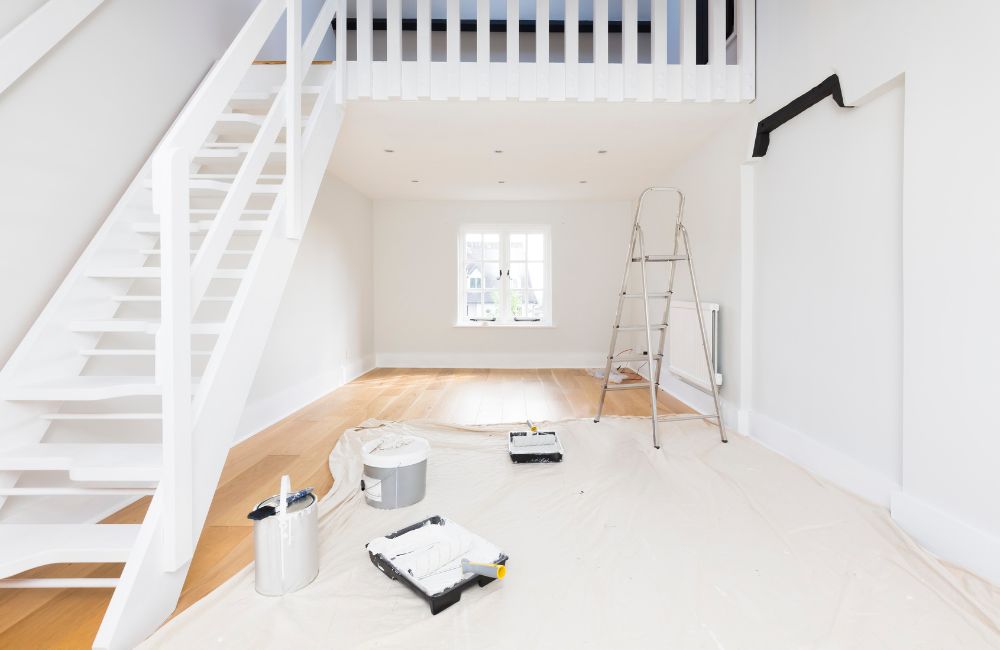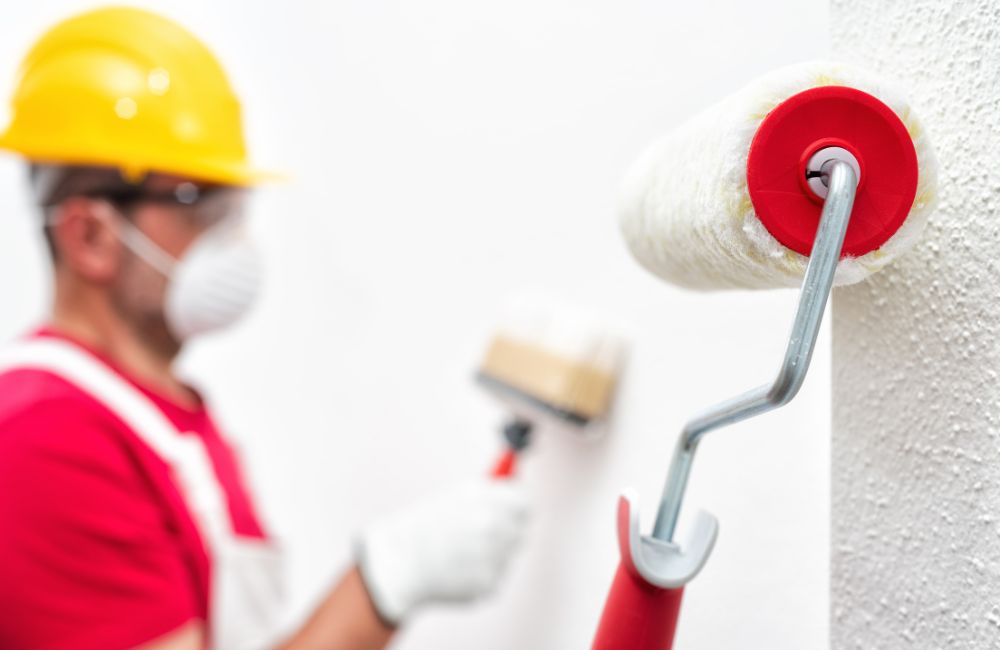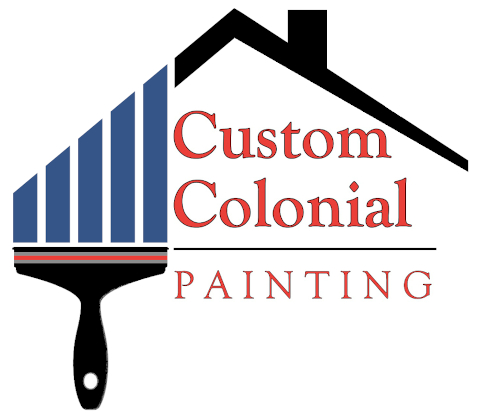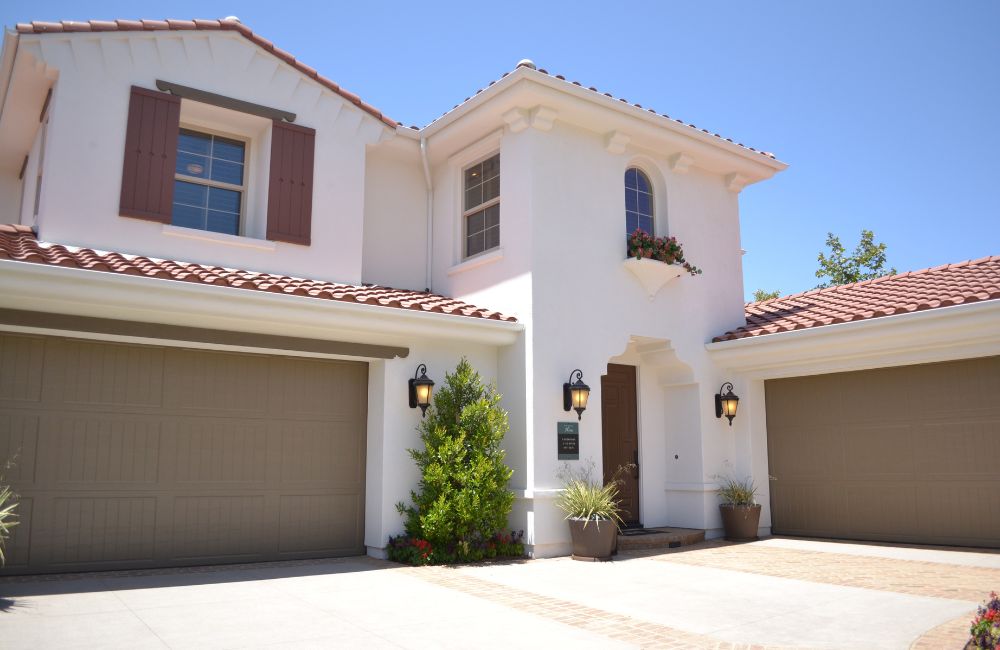Table of Contents
Key Takeaways
6 Ways Commercial Painting Enhances Real Estate Investment Returns
1. Enhanced Curb Appeal
2. Increased Property Value
3. Improved Tenant Satisfaction and Retention
4. Protection Against Environmental Damage
5. Competitive Edge in the Market
6. Energy Efficiency and Cost Savings
Choosing the Right Paint and Color Schemes for Your Property
7 Key Considerations for Selecting the Right Commercial Painting Contractor
Frequently Asked Questions
Transform Your Property with Expert Commercial Painting in Westport, CT!
| Key Takeaways ✔ Fresh paint significantly improves visual appeal, attracting tenants or buyers. ✔ Well-maintained interiors and exteriors boost property value. ✔ Clean, appealing environments enhance tenant satisfaction and retention. ✔ Quality paint protects against weather and wear, saving on maintenance. ✔ Enhanced aesthetics make properties stand out in the market. ✔ Energy-efficient paints reduce energy costs and save money long-term. |
Maximizing returns requires strategic enhancements that elevate a property’s appeal and value. One often overlooked yet highly effective strategy is commercial painting. Beyond mere aesthetics, commercial painting in Westport, CT, plays a pivotal role in attracting tenants, increasing property value, and ensuring long-term profitability.

6 Ways Commercial Painting Enhances Real Estate Investment Returns
By enhancing aesthetics, protecting surfaces, and improving overall property maintenance, commercial painting offers a substantial return on investment. Here are some of its best advantages:
1. Enhanced Curb Appeal
Properties with high curb appeal tend to attract more interest and can often command higher rents or sales prices. In fact, among realtors, 92% have suggested that sellers improve their curb appeal before listing a home for sale. This statistic underscores the importance of making a strong visual impact to maximize property value and investment returns.
Benefits
Enhanced curb appeal through commercial painting plays a crucial role in attracting potential tenants or buyers. Here are the key benefits:
- Attracts Higher Quality Tenants/Buyers: Properties that look well-maintained are more likely to attract tenants or buyers who are willing to pay a premium.
- Reduces Vacancy Rates: Enhanced curb appeal can reduce vacancy periods, ensuring a steady stream of rental income.
2. Increased Property Value
When it comes to real estate investments, the appearance and upkeep of a property play a crucial role in its market value. Commercial painting is a cost-effective strategy that can yield substantial financial returns by enhancing the overall appeal and condition of a property.
Long-Term Financial Benefits of Maintaining Aesthetic Standards
Investing in commercial painting not only provides immediate value appreciation but also ensures long-term financial benefits.
- Reduced maintenance and repair costs
- Prolonged lifespan of building materials
- Consistent rental income due to enhanced tenant satisfaction
- Higher resale value in the long run
3. Improved Tenant Satisfaction and Retention
A well-maintained property is crucial for boosting tenant morale. Commercial painting plays a significant role in this aspect, as freshly painted walls and exteriors signal that the property owner is invested in maintaining a high standard. Here are key benefits:
- Visual Appeal: Bright, clean walls are more inviting and can positively affect the mood of tenants.
- Perception of Safety: A well-maintained property appears safer and more secure, which is a top priority for tenants.
- Pride in Residence: Tenants are more likely to take pride in their living or working space when it looks attractive and well-kept.
Impact of Fresh, Clean Environments on Tenant Satisfaction
The environment in which tenants live or work significantly impacts their overall satisfaction. Fresh, clean environments created through commercial painting can lead to numerous positive outcomes:
- Health Benefits: Clean, well-painted surfaces can reduce the presence of dust and allergens, contributing to better indoor air quality and overall health.
- Psychological Well-being: Colors and aesthetics play a role in psychological well-being. Pleasant colors and well-maintained spaces can reduce stress and enhance mental health.
- Professionalism and Standards: For commercial properties, a fresh coat of paint can reflect the professionalism and high standards of the business, fostering trust and satisfaction among tenants.
Benefits of Retaining Long-Term Tenants for Consistent Rental Income
Commercial painting can significantly contribute to tenant retention through the following benefits:
- Consistency and Stability: Long-term tenants provide financial stability, reducing the risk of vacancy and the need for frequent marketing and leasing efforts.
- Cost Savings: Maintaining a property’s appearance through regular commercial painting reduces the need for more extensive, costly renovations in the future.
- Tenant Relationships: By demonstrating a commitment to maintaining the property, owners can build strong, positive relationships with tenants, encouraging them to stay longer.
4. Protection Against Environmental Damage
Commercial painting offers robust protection against a variety of environmental factors. High-quality paint acts as a shield, safeguarding buildings from harsh weather conditions, pollution, and daily wear and tear.
Weather Protection
- UV Resistance: Commercial painting can prevent damage from the sun’s ultraviolet rays, which can cause fading, cracking, and deterioration of exterior surfaces.
- Moisture Barrier: High-quality paint creates a barrier against rain and humidity, preventing water from seeping into the walls and causing mold, mildew, and structural damage.
- Temperature Regulation: Specialized paints can reflect sunlight, helping to regulate the building’s temperature and reduce thermal stress on the structure.
Pollution Resistance
- Dust and Dirt Repellent: Commercial paints formulated to resist dirt and grime ensure that buildings maintain their aesthetic appeal for longer periods.
- Chemical Protection: In urban areas with high pollution levels, commercial painting with protective coatings can prevent the chemical degradation of building materials.
Wear and Tear
- Impact Resistance: High-quality paints can withstand physical impact, reducing the likelihood of chips and scratches.
- Abrasion Resistance: These paints also offer protection against abrasion, which is particularly useful in high-traffic areas.
5. Competitive Edge in the Market
The appearance of a property can significantly influence its desirability and marketability. Aesthetic improvements, such as commercial painting, play a crucial role in distinguishing a property from its competitors. Here’s how:
- Modern and Up-to-date Look: Regular painting updates can ensure that a property looks contemporary and well-cared-for. This not only helps in attracting discerning clients but also positions the property as a modern, up-to-date option in a competitive market.
- Community Appeal: Enhancing a property’s appearance can improve the neighborhood’s aesthetics, fostering positive community relations and increasing the area’s overall desirability. This makes the property more attractive to potential tenants and buyers, setting it apart from less visually appealing competitors.
- Pest Deterrence: Using pest-resistant paints creates a healthier and more pleasant environment for tenants. This added benefit can be a significant selling point, attracting tenants who value a well-maintained and safe property, thereby distinguishing it from others in the market.
Commercial Painting in Branding and Marketing Efforts
Commercial painting does more than just enhance the appearance of a property; it also plays a significant role in branding and marketing efforts. Here’s how it contributes:
- Consistent Brand Image: For commercial properties, maintaining a consistent brand image is vital. Commercial painting can ensure that the property’s colors align with the corporate branding, reinforcing brand recognition and consistency across all properties.
- Marketing Material Enhancement: High-quality photos of a freshly painted property can enhance marketing materials. Whether for online listings, brochures, or advertisements, the appealing visuals of a well-painted building can attract more attention and generate more inquiries.
- Increased Visibility: A well-painted property is more likely to be noticed by passersby, increasing its visibility. This heightened visibility can lead to more word-of-mouth referrals and organic interest from potential tenants or buyers.
6. Energy Efficiency and Cost Savings
Energy efficiency can significantly affect operational costs and overall returns. One often overlooked but highly effective method to enhance energy efficiency is through commercial painting.
Reflective or Insulating Paints in Reducing Energy Costs
Reflective and insulating paints are specialized coatings designed to improve a building’s thermal performance. These types of paints can reduce energy consumption by maintaining internal temperatures more efficiently.
- Reflective Paints: These paints contain pigments that reflect solar radiation, preventing excessive heat absorption by the building’s exterior. By reflecting more sunlight, these paints help keep the interior cooler, especially during the hot summer months, thereby reducing the need for air conditioning.
- Insulating Paints: Insulating paints contain tiny, insulating particles that reduce heat transfer through walls. This helps in maintaining a stable indoor temperature, reducing the reliance on heating and cooling systems.
Long-term Cost Benefits of Energy-efficient Painting Solutions
Investing in energy-efficient commercial painting solutions provides several long-term financial benefits that enhance the overall return on investment.
- Reduced Energy Bills: The primary benefit is a significant reduction in energy bills. Reflective and insulating paints reduce the load on HVAC systems, leading to lower energy consumption and cost savings.
- Extended HVAC System Life: By decreasing the demand on heating and cooling systems, these paints can extend the lifespan of HVAC equipment, reducing maintenance and replacement costs.
- Enhanced Property Value: Energy-efficient buildings are more attractive to tenants and buyers. Properties with lower operating costs and sustainable features can command higher rents and sale prices, boosting overall property value.
- Environmental Benefits: Reduced energy consumption leads to lower carbon emissions, contributing to a greener environment. This can enhance the property’s appeal to eco-conscious tenants and investors.
- Compliance with Green Building Standards: Utilizing energy-efficient commercial painting solutions can help properties comply with green building certifications and standards, which can further increase their market value and appeal.

Choosing the Right Paint and Color Schemes for Your Property
Selecting the appropriate paint and color schemes is a critical aspect of commercial painting that can significantly impact the overall appeal and value of your property. The right choices can enhance aesthetics, create a welcoming environment, and even improve tenant satisfaction. Here’s how to make the best decisions for your property:
Understanding the Purpose of the Space
Different areas of a property serve various functions, and the color scheme should reflect this.
- Office Spaces: Neutral colors like whites, grays, and beiges create a professional and focused environment.
- Retail Stores: Bright, inviting colors can attract customers and stimulate spending.
- Residential Areas: Warm, cozy tones such as soft blues, greens, and earth tones make homes feel comfortable and inviting.
Factors to Consider When Choosing Paint
Selecting the right paint involves considering several factors to ensure longevity and suitability.
- Durability: High-traffic areas require durable, washable paints that can withstand wear and tear.
- Finish: The finish (matte, satin, gloss) can affect both the look and maintenance of the painted surface.
- Environmental Impact: Eco-friendly paints with low VOCs (volatile organic compounds) are better for health and the environment.
Popular Color Schemes for Commercial Properties
Here are some popular color schemes tailored for various types of commercial properties:
- Modern and Sleek: Monochromatic schemes using shades of gray with accent colors like teal or yellow.
- Warm and Welcoming: Earth tones such as beige, brown, and olive green, paired with warm accents.
- Vibrant and Energetic: Bold colors like red, orange, and blue for dynamic spaces that need to inspire energy and creativity.
Tips for a Successful Commercial Painting Project
To ensure the best results from your commercial painting project, consider the following tips:
- Hire Professionals: Professional painters like Custom Colonial Painting have the expertise to choose the right products and apply them correctly.
- Test Samples: Apply paint samples on the walls to see how they look in different lighting conditions.
- Plan the Project: Schedule painting during off-hours or low-traffic periods to minimize disruption.
- Regular Maintenance: Plan for regular touch-ups and maintenance to keep the property looking fresh and attractive.

7 Key Considerations for Selecting the Right Commercial Painting Contractor
Choosing the right commercial painting contractor is crucial to ensure a high-quality, long-lasting paint job. Here are key factors to consider:
- Experience and Expertise
Look for contractors with extensive experience in commercial painting projects similar to yours. An experienced contractor will have the necessary skills and knowledge to handle large-scale projects and specific requirements.
- References and Reviews
Check references and read reviews from previous clients to gauge the contractor’s reliability, professionalism, and quality of work. Positive feedback and a strong portfolio of completed projects can assure their capabilities.
- Licensing and Insurance
Ensure the contractor is properly licensed and insured. Licensing guarantees that they meet local regulatory standards, while insurance protects you from liability in case of accidents or damages during the project.
- Quality of Materials
Inquire about the types of paints and materials the contractor uses. High-quality, durable paints and materials can significantly impact the longevity and appearance of the finished project.
- Detailed Written Estimates
Obtain detailed written estimates from multiple contractors to compare pricing and services. A comprehensive estimate should include labor, materials, surface preparation, and any additional costs, helping you make an informed decision.
- Project Timeline and Management
Discuss the project timeline and how the contractor plans to manage the project to minimize disruptions to your business operations. A clear and realistic timeline ensures that the project stays on track and is completed efficiently.
- Warranty and Follow-Up Services
Ask about any warranties or guarantees offered on their work. A reputable contractor should provide a warranty for their services and be willing to address any issues that arise post-completion.
Frequently Asked Questions
How does commercial painting differ from residential painting?
Commercial painting differs from residential painting primarily in scale and complexity. Commercial projects often involve larger surfaces, more stringent safety regulations, and specialized materials designed for high-traffic areas. The scheduling and execution must accommodate the business’s operating hours to minimize disruptions. Additionally, commercial painters might need to use equipment like scaffolding or lifts for multi-story buildings. The preparation and cleanup processes are also more extensive compared to residential painting.
What types of paint are used in commercial painting?
The types of paint used in commercial painting vary based on the surface and environment. Common options include latex paint for interiors due to its low odor and easy cleanup, and epoxy paint for floors because of its durability and resistance to chemicals. For exteriors, acrylic paint is popular for its weather resistance and longevity. Specialized coatings, such as anti-graffiti or fire-resistant paints, may also be used.
How long does a commercial painting project usually take?
The duration of a commercial painting project depends on the size of the area, the complexity of the work, and the preparation required. Small projects might take a few days, while large-scale projects can extend over several weeks. Factors such as weather conditions, especially for exterior painting, and the need for multiple coats of paint can also affect the timeline. Efficient planning and scheduling are crucial to minimize disruptions to business operations. A detailed project timeline is typically provided by the painting contractor.
How much does commercial painting cost?
The cost of commercial painting varies widely based on factors like the size of the project, the type of paint and materials used, and the extent of surface preparation required. Additional costs might include labor, equipment rental, and compliance with safety regulations. Generally, commercial painting projects can range from a few thousand to several tens of thousands of dollars. Obtaining multiple quotes and ensuring a detailed estimate can help manage the budget effectively. It’s also important to consider the long-term value and durability of the work.
What are the signs that indicate my commercial property needs repainting?
Signs that indicate your commercial property needs repainting include noticeable peeling, cracking, or blistering of the paint, which suggests that the protective layer has deteriorated. Fading colors, especially on exterior surfaces exposed to sunlight, can make the property look old and poorly maintained. The presence of mold, mildew, or water stains indicates potential moisture problems that should be addressed promptly to prevent further damage. Frequent complaints from tenants or customers about the property’s appearance can signal that it is time for a refresh. Additionally, if it’s been several years since the last paint job, a fresh coat can enhance the property’s curb appeal and marketability.

Transform Your Property with Expert Commercial Painting in Westport, CT!
Enhance your real estate investment returns with the professional services of Custom Colonial Painting, your trusted partner for commercial painting in Westport, CT. Our expert team specializes in energy-efficient and aesthetically pleasing painting solutions that not only elevate your property’s appearance but also significantly reduce energy costs. Located in the heart of Westport, CT, we are committed to delivering exceptional results that meet your specific needs.
Contact Custom Colonial Painting today to discover how our services can transform your property and maximize your investment.



